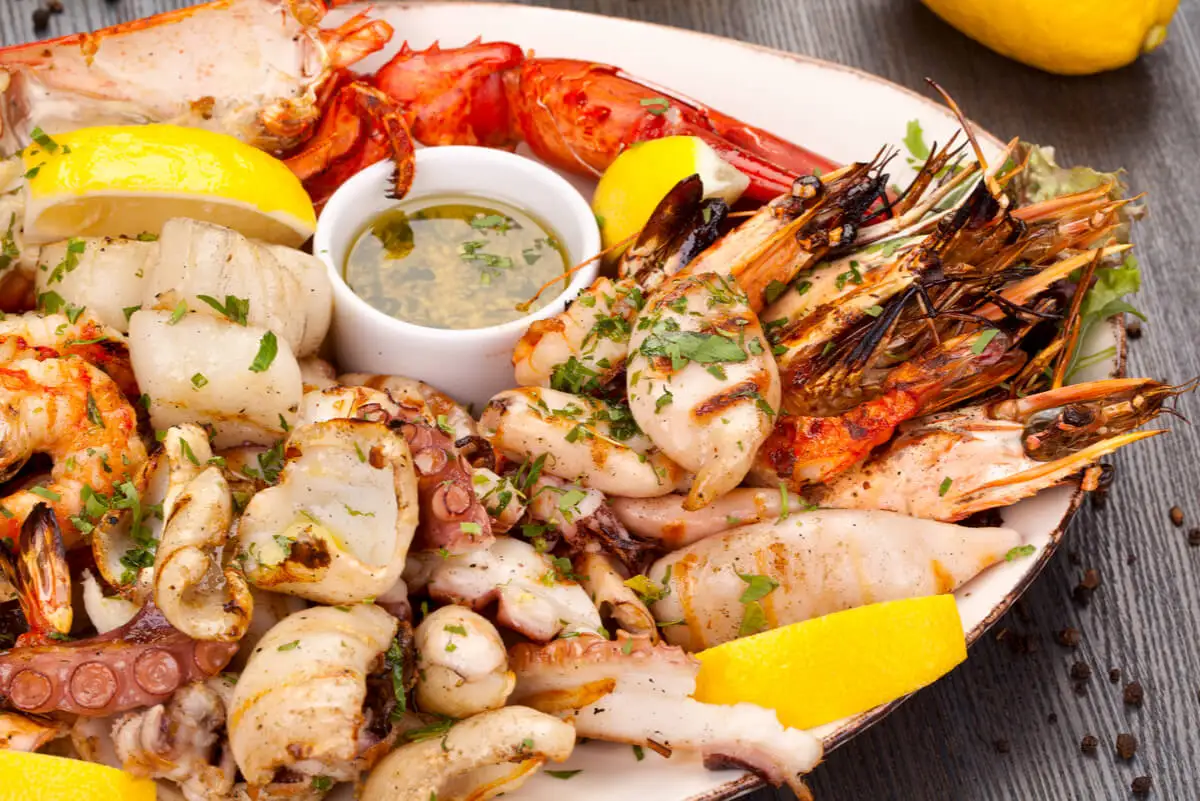Abalone: The Most Expensive Mollusk in the World


Written and verified by the nutritionist Saúl Sánchez Arias
Abalone is a species of seafood and one of the most sought-after in the world. It’s common in Asia, although little by little it has spread to other countries. In fact, it’s even cultivated in Galicia, Spain.
It’s a marine product that demands a very high price and is used mainly in haute cuisine. However, it has interesting properties from the nutritional point of view that are worth knowing about.
Before starting, it should be noted that the presence of seafood in the diet is highly recommended for health. They can help to reduce the likelihood of many chronic and complex pathologies, although it isn’t necessary to resort to the most expensive ones to do so. Simply the introducing of fish into the diet a couple of times a week would bring positive effects.
What is abalone?
Abalone, sometimes called ear shells or ormer, is a gastropod with a single shell, unlike bivalves such as clams. It is an elongated, auricular shell that bears some resemblance to an ear in shape (hence the alternative name).
There are several known species of this mollusk and not all of them have yet been totally differentiated. For the time being, they’re all categorized as edible, although the shell can also be used for decorative purposes.
Abalone normally grow on rocky surfaces in the sublittoral depths. It’s even possible to find them in salt marshes. However, they’re more common in tropical and subtropical marine waters, especially in places close to the coasts. Their diet is based on algae and small animals such as parasites. On the other hand, its predators are starfish and crabs.

In recent years, controlled breeding has been promoted due to the increase in demand for these products. In this way, casual fishing, which could be dangerous for the species itself, is also prevented.
Abalone is consumed after going through a specific cooking process, as it has a hard and fibrous texture. However, you shouldn’t overdo it with the heating, otherwise, it could end up with an unpleasant chewy appearance. From an organoleptic point of view, it has a marine flavor, but is more subtle than other products such as oysters or scallops.
Discover more here: Homemade and Easy to Make Seafood Soup Recipe
Nutritional profile
It’s important to note that the abalone is a product with a high content of proteins of high biological value. For every 100 grams (4 oz) it provides about 17 grams (nearly an ounce) of this nutrient.
According to a study published in the Annals of Nutrition & Metabolism, a daily intake of at least 0.8 grams of protein per kilogram of weight per day should be guaranteed in sedentary people to protect lean mass from catabolism.
At the same time, this food contains fatty acids belonging to the omega 3 series. These lipids are considered to be of very high quality and help control inflammation in the internal environment.
In fact, its regular intake has been shown to reduce the incidence of cardiovascular pathologies. It’ll also be important to balance its consumption with respect to omega 6, something that’s rarely achieved nowadays.
As far as micronutrients are concerned, it’s worth mentioning the presence of B vitamins and calcium, iron, selenium, and magnesium in the abalone. They’re also a source of iodine. This mineral is key to ensuring that the thyroid gland functions properly.
If a deficit is experienced, some alteration in hormone production could develop, putting your health at risk. This is evidenced by research published in Endocrine, Metabolic & Immune Disorders Drug Targets.
Iron, on the other hand, ensures proper oxygen transportation through the blood. This mineral has a low absorption rate, and this is even worse when it comes from vegetable sources.
To minimize this problem, it should be consumed together with a significant dose of vitamin C. You should always try to prevent anemia, as, once it appears, it can need prolonged treatment.
You may also be interested in: Shellfish Allergies: Symptoms and Treatments
Abalone, sea ears, an expensive but nutritious product

As you can see, abalone is one of the most prized products offered by the marine ecosystem. It isn’t frequently consumed in Western countries, mainly due to its high price.
It’s rarely sold in large supermarkets, as it’s normally used in haute cuisine. Its taste is exquisite and its nutritional content is excellent, so it’s considered good for health.
Finally, it’s important to emphasize the need to ensure variety in the diet in order to maintain a good overall state of health. The more variety we have in our diets, the less likely we are to develop nutritional deficits. This will ensure that physiological functions are performed correctly, without problems that could affect our overall health.
All cited sources were thoroughly reviewed by our team to ensure their quality, reliability, currency, and validity. The bibliography of this article was considered reliable and of academic or scientific accuracy.
- Richter, M., Baerlocher, K., Bauer, J. M., Elmadfa, I., Heseker, H., Leschik-Bonnet, E., Stangl, G., Volkert, D., Stehle, P., & on behalf of the German Nutrition Society (DGE) (2019). Revised Reference Values for the Intake of Protein. Annals of nutrition & metabolism, 74(3), 242–250. https://doi.org/10.1159/000499374
- Innes, J. K., & Calder, P. C. (2020). Marine Omega-3 (N-3) Fatty Acids for Cardiovascular Health: An Update for 2020. International journal of molecular sciences, 21(4), 1362. https://doi.org/10.3390/ijms21041362
- Triggiani, V., Tafaro, E., Giagulli, V. A., Sabbà, C., Resta, F., Licchelli, B., & Guastamacchia, E. (2009). Role of iodine, selenium and other micronutrients in thyroid function and disorders. Endocrine, metabolic & immune disorders drug targets, 9(3), 277–294. https://doi.org/10.2174/187153009789044392
This text is provided for informational purposes only and does not replace consultation with a professional. If in doubt, consult your specialist.








